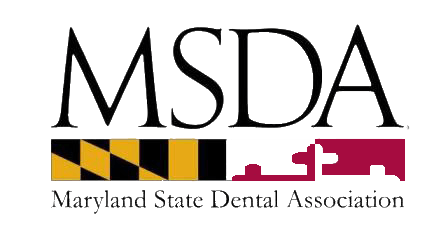Smile Savers Dentistry Welcomes
Dental Emergencies & New Patients
Request your LANAP Consultation
Gum Disease & LANAP
We will get back to you as soon as possible
Please try again later
Limited Time Offer: $50 OFF Your First Visit
Gum Disease & LANAP Treatment
At some point in your life, you’ve probably brushed your teeth and spit out pink toothpaste foam in the mouth. That happens when brushing makes your gums bleed. If this occurs, it means that your gums are inflamed because of infections lurking in hidden areas. If your gums appear red or puffy, if you have bad breath or sensitivity around tooth roots, these are also signs of inflammation. You might have several questions about this condition; consulting with professionals can give you the guidance you need.
This infection and inflammation is called gingivitis. A regular schedule of brushing, flossing and visits to the dentist will help prevent gingivitis. Laser dentistry could be a viable option to consider for preventative care. It’s also helpful to avoid sugary foods and smoking. The healthier and less stressful your lifestyle is, the better your oral health will be, facilitating better recovery and regeneration of healthy tissues.
What Causes Gingivitis?
In general, gum disease is caused by the buildup of plaque and tartar on your teeth. When this starts to extend beneath your gum line, the germs trapped beneath your gums can lead to infection and require removal.
There are several factors that can increase your risk of developing gum disease. These include:
- Not brushing or flossing correctly
- Not brushing or flossing frequently
- Smoking or using tobacco products
- Having a weakened immune system
- Having a family history of gum issues
- Experiencing hormonal changes
- Having an impacted or partially-erupted tooth
- Having crooked teeth
It’s important to see a dental professional to get your gum disease treated before it develops into a more serious problem and affects your gum tissue and teeth. Call us at
(410) 730-6460 to schedule your periodontal appointment at our Columbia, MD, office today.
Symptoms of Gingivitis
In its earliest stages, gingivitis does not typically cause pain. In fact, your symptoms may only happen occasionally, which can make it difficult for you to know if you have gum disease. The best way to be sure is to attend your regular 6-month checkups with our dentists at Smile Savers, who are skilled in periodontal therapy.
In addition, watch out for these common symptoms of gingivitis:
- Bleeding gums, especially when you brush or floss
- Gums that seem to bleed for no reason
- Red, warm, or swollen gums
If you don’t get this condition treated by a dental professional fast, you could wind up with advanced gum disease that is more difficult to treat, called
periodontitis, which might require periodontal surgery.
When Gingivitis Becomes Periodontitis
When gingivitis is allowed to persist, it progresses to a more serious condition called periodontitis. This stage might necessitate LANAP surgery. In periodontitis, the inflammation is more severe and has a more damaging effect on the gums. Pockets begin to form around the teeth as the gums pull away, creating a conducive environment for bacterial growth and necessitating laser therapy.
Since the bacterial deposits can’t be reached through normal cleaning methods, they have a chance to attack the bones around the teeth, with potential osseous surgery needed in the future. Bone mass is gradually lost, which will ultimately result in teeth that are loose and could be lost. Then you will need dentures or dental implants to replace these lost teeth.
Your gums visibly begin to recede so that when you look in the mirror, your teeth look longer, as though you had crown lengthening done. It’s very easy for abscesses to form in these pockets, as well.
Symptoms of Periodontitis
Since periodontitis is the more advanced form of gum disease, its symptoms are much more noticeable. These symptoms can include:
- Loose or lost adult teeth
- Sore, hot, swollen, or achy gums
- Pain in your teeth or gums when chewing
- Tooth sensitivity to hot and cold foods or drinks
- Receding gums that make your teeth look longer
- Pus forming in the pockets between your teeth and gum tissue
- Persistent bad breath despite brushing, flossing, and using mouthwash
If you are experiencing any of these symptoms, it's crucial to engage in dental laser assisted therapies for effective outcomes. Schedule a periodontal appointment right away at our dental office in Columbia, MD 21045. In some cases, your symptoms could indicate a dental emergency that needs to be handled fast to protect your smile.
Call us at
(410) 730-6460 to schedule your appointment.
Health Risks of Untreated Periodontitis
The longer you live with untreated periodontitis, the higher your chances of damaging your smile. Getting treatment with periodontics (the branch of dentistry that handles the gums and the bones beneath them) is the only way to prevent this damage. Considering LANAP procedure options can sometimes reduce the risk of further complications.
Untreated gum disease:
- Increases your risk of heart disease by 3x
- Can increase your blood pressure
- Leads to inflammation in other areas of your body
- Weakens your immune system
- May increase your risk of developing oral cancer
There’s no reason to put your health at risk! Call Smile Savers at
(410) 730-6460 to schedule your periodontics appointment today.
Is There a Big Difference Between Gingivitis and Periodontitis?
The biggest difference between gingivitis and periodontitis is this:
- Gingivitis is reversible with simple dental cleanings and good oral hygiene.
- Periodontitis requires more advanced treatment to handle; and if you have severe symptoms, you may end up with permanent damage to your gum tissue, teeth, and jawbones.
How Do You Treat Gum Disease?
So far, we have mentioned everything you need to know about what gum disease is, how to recognize it, and why you should get it treated right away. Now it’s time to go over the two main ways your dental professional can treat your gum disease and which one we recommend at Smile Savers.
Traditional Periodontal Disease Treatments
Periodontitis is a very widespread problem. Until recently, the usual treatment for periodontitis involved antibiotics, deep cleanings and even gum surgery, which can be quite painful. In fact, despite the fact that these procedures can be necessary to prevent the loss of one’s teeth, they are often so painful that patients avoid them—causing the gum disease to progress even further. The use of dental laser assisted technologies is transforming the approach to treatment, making it more tolerable for patients.
However, at Smile Savers Dentistry, Dr. Daniel Stewart has found a much better way to help his patients with gum disease. Called “LANAP,” this laser treatment utilizes cutting-edge technology to treat gum disease without the painful effects of previous methodologies. Pioneering the frontier of periodontal health, the LANAP protocol - a laser periodontitis treatment - stands as the first and only regimen of its kind to garner FDA clearance, rapidly becoming a favored selection among discerning dental professionals.
About LANAP Gum Disease Treatment
Smile Savers Dentistry is one of the few practices in the Columbia, Maryland area that offers LANAP (short for “Laser-Assisted New Attachment Procedure”). By passing the laser over the inner surface of the gum pockets, diseased tissue is destroyed so it can be replaced by new, healthy tissue. This new tissue will securely reattach itself to the surface of the tooth, eliminating the empty pocket entirely.
There’s very little trauma to the gums, so healing is much faster than with gum surgery and there is no need for sutures. If you have been told that you suffer from periodontitis, call us to find out if you are a candidate for LANAP treatment. This is a totally different experience than any previous periodontal treatments you’ve had.
- Minimally invasive procedure
- Incredibly accurate laser technology
- Faster healing time
- Stimulates new bone growth
- Stimulates new gum tissue growth
- No stitches needed
- Less bleeding and swelling of gums after LANAP, promoting smoother post-op experiences
- Improves oral health
- Much more comfortable than traditional treatment
Frequently Asked Questions about Gum Disease and LANAP
What is the cost of LANAP?
-
Read Transcript here
Summer (00:00):
The cost of LANAP, it depends on the severity of your disease. So we like to get you in, do an evaluation, and then give you a cost of what it would be for you.
Insurance usually will cover a portion of it up to your yearly max, so if your yearly max is a thousand, then they'll cover up to that thousand dollars. The absolute.
We have several payment plans anywhere from 12 months with no interest to extended plans with interest to make affordable payments for you.
Note: we have no interest 3rd party financing services available for those who qualify.
Common Questions About LANAP
-
Read Transcript here
Dr. Stewart (00:00):
It's pretty amazing. The laser has been made so that it'll actually go after the bacteria in the pocket and it's specific to the type of bacteria that caused gum disease. So when you use that laser, it literally will sterilize around the pocket and kill the bacteria. That's how it works.
It also uses the light of the laser to actually energize the bone and the hi the tissue that heals and it allows it to heal faster. If you don't do lan nap treatment, you most likely will lose your teeth because if you're coming to see me for LANAP, you usually are pretty advanced and you don't have much time left. So I usually find if you don't do anything, you're gonna lose your teeth. In most cases it will.
through the years of doing this, we've had really excellent results. Sometimes you'll lose a few just because they're so badly damaged, but the majority of them you'll be able to save.
(00:53)
the LANAP is a lot different cuz we use a laser to do a lot of our procedure and the laser is so small that very nice to the gums. We don't have to use scalpels and, and sutures to hold everything together. When we're finished, we actually just use the laser and it'll actually heal it on its own.
Well, if you file a protocol that you've been, you'll be taught after you do the procedure, is you shouldn't have to have it done again. In some rare cases, you may have to, you might have to go back in and to retreat using LANAP near certain sites, but a majority of the patients that I've seen haven't needed to have that done afterwards. Usually it depends on how much is needed, but normally if it's your full mouth, we do two parts, one half of the mouth one day and the other half the other day.
(01:39)
And it's usually about a hour and a half. Oh yeah. it's like a normal dental procedure where you would have anesthetic, you would be totally fine after you're finished. It's about an hour and a half appointment, so you might be a little tired, but you should be totally fine.
And again, drive yourself an It does. it depends on if you want me to write you a note and get outta work. No, just the amazing thing about it is it seems like a very complicated procedure, but actually for you can go home, you can have a normal day, you can go right to work. You may be anesthetized so you make people make, may make fun of you, but outside of that you should be totally fine. Go back to work, resume most of your normal routine.
Actually it's really amazing considering what we're doing for you and the surgery that we do. You won't have much pain at all. Some people may need a Motrin afterwards or an ibuprofen, but most cases people are like, call me the next day asking when am I gonna be in pain? And they aren't. That's the pretty neat thing about it.
-
Do I need LANAP?
We would need to do an exam to see if you qualify for the procedure because everyone’s disease is different in severity.
-
Will my insurance cover LANAP?
It will depend on your insurance benefits. Most insurance will have an allowance for it. But it will depend on your plan, past gum treatments, and your yearly maximums. It's always best to consult with your insurance provider and ask specific questions regarding coverage.
-
What is gingivitis?
It is common to have gingivitis. This form of gum disease causes inflammation in the gingiva. Plaque on the teeth triggers an immune response in the gums. This can lead to redness, swelling, and bleeding.
The more severe form is called periodontitis. It affects supporting structures such as ligaments and bones of teeth. Untreated gingivitis can cause the bone and tissue that hold teeth in place to break down. Untreated periodontitis can cause gum recession, tooth cavities, and other dental issues.
Although gingivitis and gum disease are both forms of the same condition, they differ in severity and tissues affected. Periodontitis is treated by antibiotics, deep cleaning and surgery.
-
What are the early signs of gingivitis?
The following are the first signs of gingivitis:
- Swollen or puffy gums
- The gums can appear darker or redder.
- Bleeding after flossing or brushing
- Bad breath or persistent bad mouth taste
- Teeth with longer teeth or receding gums
- Sensitive teeth
- Your teeth can change their alignment when you bite or chew.
If you are experiencing any of these symptoms, it is vital that you make an appointment with Dr. Patel. Gingivitis can be treated by good oral hygiene like daily brushing and flossing. Gingivitis, if left untreated can progress to a more serious form of gum infection known as periodontitis. This is a condition that should be treated as soon as possible.
-
What are the risks of gingivitis?
This condition may cause discomfort, such as bleeding or swelling, but it is not harmful. Gingivitis, if left untreated can lead to more serious forms of gum disease, like Periodontitis. This can cause tooth decay and other dental problems.
Researchers have also found that gum disease can be linked to other health conditions such as stroke, diabetes or heart disease. The exact cause of gum inflammation is not yet fully understood. However, it is believed that systemic inflammation can increase the risk for other health problems.
To maintain good health, it is important to treat gingivitis promptly to prevent it from progressing to more severe forms. This can be achieved with good oral hygiene. Regular dental cleanings and checkups are important, as is brushing and flossing.
-
Can you have both periodontitis AND gingivitis?
Periodontitis can occur in conjunction with gingivitis. Periodontitis can begin with gingivitis. Untreated gum disease can progress to more advanced stages.
Periodontitis can develop when bacteria in plaque and tartar start to spread and grow below the gumline. The gums may pull away from the teeth, forming pockets that become infected. Over time, the infection can cause tissue and bone supporting the teeth to break down. The teeth can become loose and even fall out.
Consult a dentist or periodontist if you think you may have both gingivitis and periodontitis. They can conduct a thorough examination and prescribe the right treatment. To remove plaque and tartar, it may be necessary for a deep clean to be performed below the gumline. Infections can be controlled by antibiotics. In severe cases, surgery may be required to repair bone and gum damage.
-
How do dentists treat gingivitis?
To treat gingivitis effectively, dentists must first assess the severity of the disease through a comprehensive dental exam, which includes assessing the gums, teeth, and oral tissues. Once gingivitis is diagnosed, the dentist will recommend a specific treatment plan.
Treatment of gingivitis is aimed at reducing the inflammation and preventing it from progressing to more serious gum disease such as periodontitis. Treatment includes:
- Dental cleaning is done by using special instruments to clean the teeth and gums above and below the gum line.
- Improve your oral hygiene. Improve oral hygiene. Dr. Patel may suggest that you brush and floss at least twice daily, and use antimicrobial mouthwashes in order to reduce bacteria.
- This deep cleaning procedure removes bacteria, tartar and other deposits below the gumline. The surface of the root is also smoothed to encourage healing and prevent future buildup.
- In some cases, antibiotics may be prescribed to treat the bacteria causing gingivitis.
- Dr. Patel may recommend lifestyle changes to improve your oral and general health. For example, you can quit smoking or manage stress.
Treatment of gingivitis is dependent on severity and the individual's needs. The majority of gingivitis cases can be treated with the right care and maintenance.
-
How long does it take for gingivitis to heal?
The healing of gingivitis can be slow, depending on the severity, how it is managed, and the health of the individual. With proper oral care and treatment, gingivitis can be reversed within a few weeks or months.
A dentist may suggest that you undergo more frequent cleanings in the beginning stages of treatment. Every three to four month, for example, to remove tartar and plaque buildup on your teeth and gums. For example, a person may have to alter their lifestyle in order to promote healing and reduce swelling. This could include quitting smoking, or changing their diet.
You will see an improvement in your symptoms within a few weeks of starting treatment. This includes less swelling and bleeding. Regular dental cleanings are still necessary to prevent gingivitis and other forms of gum diseases from developing.
Although gingivitis can be reversed and treated, it is not a panacea. To maintain good oral hygiene, regular dental cleanings and examinations are essential.
-
What is Periodontal Disease (PD)?
Also known as gum disease, periodontal disease can be a chronic infection caused by bacteria. This is a chronic infection that affects the gums and tissue surrounding teeth. Tartar build-up on teeth can lead to inflammation and infection. Untreated periodontal disease can lead to tooth loss and bone destruction.
Periodontal disease can be divided into two main types: gingivitis and periodontitis. Gingivitis is the milder form of periodontal disease. It's characterized by red, swollen, and bleeding gums. The gums can become infected when they pull away from the teeth. Periodontitis may also lead to bad breath, receding gum lines, loosening teeth, and changes in the way your teeth fit together when you bite.
Regular brushing, flossing and professional cleanings can help manage and treat periodontal disease. Surgery may be needed in more advanced cases. Consult a dentist or periodontist if you suspect you have periodontal disease. Early treatment will prevent further damage to your teeth and gums.
-
What is periodontal disease?
A bacterial infection is the main cause of gum disease, also known as periodontal (gum) disease. The bacteria in dental plaque, a film that forms on teeth, can cause gum and tissue inflammation and damage.
A number of factors can cause periodontal disease.
- Poor oral hygiene. When plaque and tartar is not removed regularly by brushing and flossing, gum disease can develop.
- Smoking and tobacco consumption. Smoking and tobacco use can make gum disease worse.
- Some people are more susceptible to periodontal disease due to genetic factors.
- Hormonal Changes - Hormonal fluctuations in puberty or pregnancy can increase gum sensitivity, and therefore the risk of gum disease.
- Medication: Certain medications can cause dryness of the mouth and increase the risk of gum disease.
- Gum disease is common among people who have chronic diseases, such as HIV/AIDS, diabetes, heart disease, and diabetes.
It's important to keep your mouth clean and see a dentist regularly if you want to prevent gum disease. If you think you have gum disease, you should see Dr. Patel.
-
What are the symptoms and signs of periodontal disease?
The severity of periodontal or gum disease can influence the symptoms. Early symptoms may not be apparent. These symptoms may increase in severity as the disease progresses.
Red, swollen, or tender gums can be an early sign of gum disease.
- Bleeding gums: If your gums bleed while you are brushing or flossing, this is a sign of gum disease.
- Pockets between teeth can form as the gums recede.
- When gum disease progresses, supporting tissues and bones can be destroyed. As a result, teeth can become loose.
- Gum disease can cause bad breath.
- Changes in the bite: Gum diseases can cause teeth to shift, changing how upper and bottom teeth meet during biting.
- Advanced gum disease can cause pus or other discharges around the teeth and gums.
Gum disease may not be visible in some people. Early detection of gum disease can be prevented by regular dental cleanings and examinations.
-
What other diseases can be associated with periodontal infection?
Periodontal disease has been linked to other health conditions. Periodontal diseases has been associated with other health conditions.
- Periodontal disease may increase your risk of heart disease.
- Diabetes: Diabetics are more susceptible to infections, including gum disease. If blood sugar levels aren't well controlled, gum disease may be harder to treat.
- Pregnancy complications. Women with periodontal disease may be more susceptible to premature births or low birth weight.
- Rheumatoid Arthritis - Although this connection is not yet fully understood, it may exist a link between gum disease and the rheumatoid.
It is difficult to understand the relationship between gum disease and other conditions. Regular dental cleanings, checkups and brushing and flossing can help reduce the risk of gum disease.
-
Can periodontal disease be cured?
Gum disease, or periodontal disease, cannot be cured. However it can be effectively treated. The treatment aims to control the infection, manage symptoms and prevent further damage.
Most gum diseases are treated by a combination of office procedures and at-home care. Early gum disease treatments can include dental cleanings and improved oral hygiene, such as brushing regularly and flossing.
The treatment for advanced gum disease, or periodontitis, may involve more invasive procedures such as scaling and planning (deep cleaning), surgical intervention or bone and tissue grafts.
Although gum disease is treatable, it is a chronic disease that requires maintenance to keep it at bay. It is recommended that you have regular dental cleanings, checkups, and improve your oral hygiene. In some cases, prescription antibiotics or mouthwashes may be prescribed.
Although gum disease cannot be cured, it can still be managed and treated effectively through a combination of in-office procedures and at-home care. It is essential to work closely with your dentist or periodontist to develop a treatment plan that meets your needs.
-
What are the treatments for periodontal disease?
Treatment options can be affected by the severity of gum or periodontal disease. The treatment may involve a combination of in-office procedures and at-home care.
There are several treatments for gum disease.
- Professional dental cleaning. Professional dental cleaning is recommended in the early stages of gum disease (gingivitis). This will remove plaque and tartar, and improve the health of the gums.
- This deep cleaning technique is used in cases of advanced gum diseases (periodontitis) to remove plaque, calculus and tartar from below the gum line. This involves removing plaque, tartar and calculus from beneath the gum line.
- Periodontal Surgery is required in certain situations to remove damaged tissue or recontour the gums to reduce the depth of periodontal pockets and improve their health.
- Bone and Tissue Grafts: In cases of severe gum disease, it is often necessary to perform bone and tissue grafts in order to replace the lost tissue and bone. These grafts also help to improve the stability and strength of teeth.
- In some cases, antibiotics may be prescribed to treat bacterial infections that can cause gum disease.
You can treat gum disease at home with improved oral hygiene including brushing, flossing and antiseptic mouthwash.
It is essential to work closely with Dr. Patel or a periodontist to develop a treatment plan that meets your needs. To manage gum disease, it is important to have regular dental cleanings.
-
Does periodontal treatment and tooth cleaning hurt?
Some patients may experience discomfort during and after the procedure, even though teeth cleanings and periodontal treatments are not supposed to cause pain. The level of discomfort you experience will depend on the severity of your gum disease and what treatment you receive.
Using special tools, the dentist or dental hygiene will remove plaque and tartar from the teeth and gums during a professional cleaning. This procedure can cause some discomfort, especially if your gums or teeth are sensitive.
For more advanced gum disease, like periodontitis, periodontal surgery or scaling and root planning may be needed. These procedures can be uncomfortable and cause sensitivity during and after the procedure. Anesthesia can minimize discomfort.
It's vital that you tell Dr. Patel if you are experiencing any discomfort. Dr. Patel can adjust treatment to reduce discomfort.
-
When should I schedule an appointment with my dentist if I suspect I may have gingivitis?
You should make an appointment to see Dr. Patel immediately if you suspect that you may have gingivitis. It is important to seek treatment early on and intervene quickly if you want to avoid the disease progressing further into more serious forms of gum disease, like Periodontitis. It can lead to permanent damage of the gums and teeth.
Here are some symptoms and signs that could indicate gingivitis.
- Bleeding gums may occur when brushing or flossing.
- Swollen or tender gums
- Continued bad breath
- Receding gums
- The color of your gums can change (e.g. redness).
- If you have any of these symptoms, or a history of gum disease, then make an appointment to see Dr. Patel. You will have your gums evaluated and receive the proper treatment.
Regular dental cleanings are also necessary to prevent gum disease and detect problems early. You can discuss with Dr. Patel how frequently you should make these appointments based on your risk factors and individual needs.
Why Choose Smile Savers for Gum Disease Treatment?
Dr. Daniel Stewart founded Smile Savers to offer one-of-a-kind service to our neighbors in Columbia, MD, and the surrounding communities. Whether you need gum disease treatment, dental implants, or a simple cleaning, our caring team will be here for you every step of the way.
It’s because Doctor Stewart cares about your comfort and oral health that he invested in the LANAP machine for treating gum disease. For over 30 years, our mission has been to provide the best dental care in Maryland, and we work hard for you to live up to that ideal.
If you have gingivitis or periodontitis, call Smile Savers to schedule an appointment with our experts. You deserve a healthy smile, and we’ll help you achieve it!
Call us at
(410) 730-6460 today.
Gum Disease & LANAP
We will get back to you as soon as possible
Please try again later
410-571-4637
Our Primary Service Areas
Content Reviewed by
Website designed and maintained by Xpress, INC
All Rights Reserved | Smile Savers Dentistry







